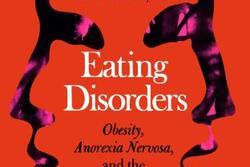Bowls and Body Image: The Gendered Expectations of Eating
It is chicken tender day in the dining hall. The lunch line is long, but the reward is well worth the wait. Lunch tables are filled with laughter and smiles as my fellow students enjoy the brief respite from school that our midday meal gives.
Yet a certain, rather peculiar gender disparity is all too noticeable: nearly all the girls are eating out of bowls—obscuring the actual content and quantity of their meal—whereas all the boys have plates overflowing with a heart attack and a half’s worth of chicken tenders and French fries.
Over the past couple of years, I have paid particular attention to the rise in the use of bowls instead of plates. Now, I am not one to “yuck” another’s “yums” but this seems to manifest itself as yet another dieting habit—in addition to specific diet foods/drinks or simply not eating—that differentiates adolescent girls and boys. Therefore, I turn towards the media—particularly fast-food ads—as a tool for offering some sort of explanation as to why there has been a rise in this arguably obscure attitude towards presentation of our food.
Although I can analyze a multitude of fast-food chains advertisements, I will choose one that has stood out to me in my research: a Jersey Mike’s subs TV ad introducing their new salad bowls that held “your favorite sub in a bowl.” At first this advertisement may seem appealing—after all, Danny Devito is the star of the show—as it uses comedic flavor to draw attention. Indeed, the advertisement itself is rather innocent. Jersey Mike’s simply has a new product. The product itself and its advertisement manifest and propagate the idea that chains and fast food can have “healthy” products. Jersey Mike’s is attempting to offer an alternative option for their meals and ultimately expand their consumer audience.
Yet the ad relies on the association of “salad” with “healthy.” Although salad can be a healthy addition to a balanced diet, the ad implies that it is a way to “cheat.” Moreover, just because the salami is mixed with lettuce does not change the fact that it is still salami. Though the new salad bowl may bypass the “bread” portion of the sub, it doesn’t change that it's fast food, which highlights the very American concept of balancing out “unhealthy stuff” with “healthy stuff.” All this is to say is that what results is a very twisted cycle: get food from Jersey Mike’s, eat “your favorite sub in a bowl,” ingest processed meats, cancel it out with salad, and remain skinny. Indeed, Jersey Mike’s emphasizes the convenience of the bowl that allows an individual to feign an effortlessly healthy diet by bypassing the bread in a sub.
How exactly does a Jersey Mike’s ad translate to the bowl obsession at my school? In an attempt to find and rewatch the ad, I instead found multiple social media shorts of people attempting to recreate the Jersey Mike’s bowl—one of which featured a woman stating how she lost 40 pounds from eating salads. One woman made her homemade bowl even more appealing by emphasizing its potential to help lose weight. Ultimately, she used the ideal of weight loss to get more views. The Jersey Mike’s ad is both a manifestation and perpetrator of America’s cycle eating trends which now feature “bowls” that cut carbs and carry health benefits—and Jersey Mike’s ultimately reaps the financial benefits from weight and health insecurities.
As girls are more at risk for developing eating disorders than boys, these ads and social media offshoots negatively impact girls and their images about food. I see girls at my school being afraid to eat and using bowls as a way to cover up their portions or as a way to make their meals seem “healthy". While eating “healthy” is a good thing, a good diet is about balance—something that does not just come from a bowl with a few pieces of lettuce and a piece of salami in it.
I concede that bowls are easier for transportation purposes. I even use them sometimes. I even use bowls in the same way that I see the girls at my school do. I don’t really have a problem with bowls. The problem that I have is that ads like the Jersey Mike’s ad seem innocent enough—and are probably geared towards a more aged population. Yet, these ads not only reveal what people are conscious about but also capitalize on gendered eating disparities most acutely apparent in the teenaged and younger populations of young women.
Healthy eating is important, but, when it’s chicken tender day in the dining hall, girls should not have to feel like they have to hide or limit their chicken tender intake because it is not “healthy.” I can’t stop a Jersey Mikes ad or any of its bowl-promoting brethren from airing. I can’t stop leeches on social media from making claims about magical weight loss elixirs. I can’t stop my peers from watching these things. But, by proudly putting my chicken tenders on a plate, I hope that I can empower girls around me to do the same.
This piece was written as part of JWA’s Rising Voices Fellowship.







